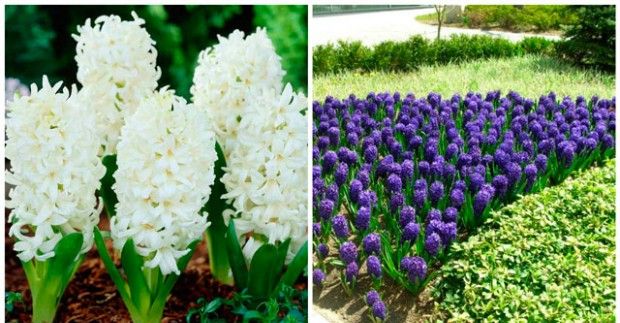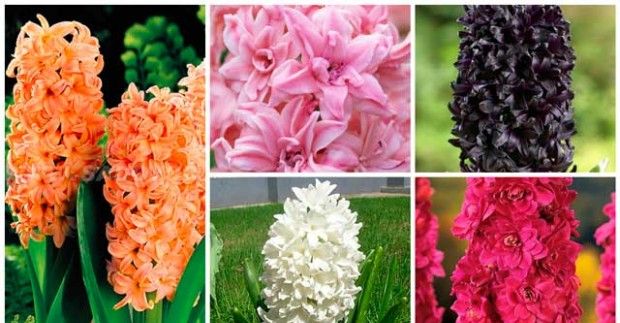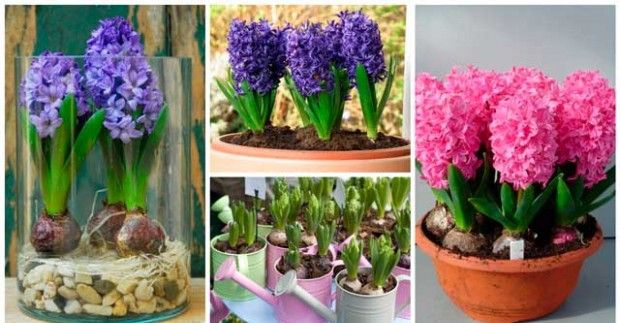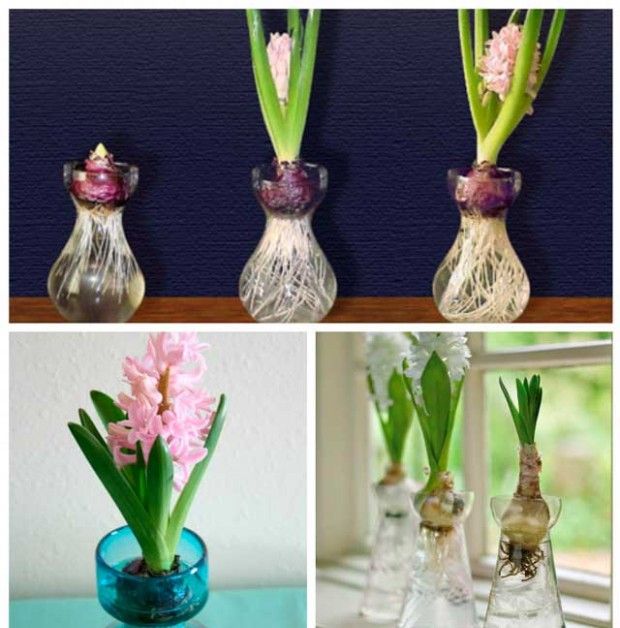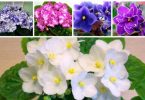These lush flowers have attracted the attention of breeders since the 18th century. The Mediterranean and Asia Minor were home to modern hyacinths. However, the distant ancestors of these unusual flowers did not differ in such exquisite beauty and exuberant flowering. But plant lovers have already managed to significantly change more than one species, relying on selection. The result of painstaking work is modern hyacinths, which differ in color and size..
What else do these plants love? Of course, for their ability to please the owners with flowering not only in spring and summer, but also in winter. A wonderful aroma will fill your home with the atmosphere of the warmest and kindest days, and hyacinths on the windowsill will cheer up even the saddest person.
And even if these flowers were once wild, but they grow remarkably at home, you just need to take proper care of them.

The main types of hyacinths
At the moment, this genus includes only three main types: transcaspian, oriental and hyacinth Litvinov. Previously, there were much more of them, but the next reorganization of the classification of species led to the fact that most of them were attributed to other genera.
Transcaspian hyacinth reaches 20 centimeters in height. Its leaves are the same width both at the stem and at the end. The flowers are bright blue, from 4 to 10 in one inflorescence. You can meet him in Turkmenistan in the Kopetdag mountains.
Hyacinth Litvinova differs in bluish color of leaves and relatively large size, up to 25 centimeters. The flowers are heavily cut and have a pale blue color. Found in Iran and Turkmenistan.
Oriental hyacinth – this is the most common type, which became «progenitor» all modern varieties. You can distinguish it by its thin peduncle. Flowers can be colored in pale pink, blue and even light yellow. Another feature is the rare arrangement of flowers.
There are several varieties worth mentioning.
Oriental hyacinth whitish can be recognized by a short peduncle (15 centimeters) and a small number of flowers (no more than three). The petals are usually pale white, and the flowers themselves exude a pleasant aroma.
Oriental hyacinth provencal does not differ much from the previous specimen in structure, but is characterized by a rich pink color of flowers.
There are also other systems for dividing hyacinths: according to the shape of the petals (simple, double and multi-flowered), according to the flowering time (early, middle, late) and according to color. There are 6 groups: red, white, blue, yellow and orange, lilac and purple, pink.
What is the best way to grow hyacinth?
Many flower lovers do not grow hyacinths in their usual potted soil, and in small vases. Fill them with a mixture of water and sand. This method is considered ineffective, since the plant does not receive enough minerals. There is also a great risk of rotting bulbs..
Best to grow hyacinth in containers with drainage holes or a thick layer of any drainage filler (for example, expanded clay). This way you can avoid most of the problems that arise and grow healthy and strong flowers..
How to grow hyacinths at home?
If you want to decorate your home with these cute and fragrant flowers, then carefully consider preparation of necessary materials. Hyacinths are not capricious flowers, but only careful care will allow you to get a beautiful and flowering plant..
Seed selection
To grow a healthy plant, you need good seed. You can buy hyacinth bulbs both in the market and in flower shops. But be sure make sure the quality of the goods. A good bulb should be smooth and firm to the touch. If you notice damage, changes in density and traces of pest infestation, inform the seller and choose another copy. A healthy bulb is the key to a strong and strong hyacinth.
Planting hyacinth
You can grow hyacinth at home not only in the soil, but also in a container with water. For the second way you need a narrow glass, a jar or flask of a suitable size. The container can be made of any non-toxic material. The nutrient solution is poured inside, which can be purchased at the store or made by yourself by mixing water with fertilizers. The bulb itself should be placed so that only its lower part touches this solution. That is why it can be difficult to find the right container..
You can plant hyacinth in the ground. For this you will need a medium-sized pot (with a diameter of no more than 12 centimeters), universal soil, drainage and clean river sand. Drainage is laid in a thick layer to the bottom, and then soil is poured into the pot. You can use any soil with low to medium acidity. After that, river sand is poured in a thin layer. The bulb can be planted. Try to place it so that it does not touch the walls of the pot..
If you do not have several medium ones, but you have one large pot, then the bulbs can be planted in it. Just observe a step of three to four centimeters between different plants and remember the distance from the walls of the pot itself.
Forcing hyacinth
The advantage of hyacinths is that they flowering can «program» in advance. Want to be reminded of summer for New Years? Get ready in early October. Thinking to give blooming hyacinths in pots for March 8th? Mid December is the recommended planting time.
Whichever method of disembarkation you choose, after that hyacinths need to be removed in a dark, cool place, pre-covered with polyethylene. It could be a basement or even a refrigerator. The recommended temperature for this period of forcing is 5 to 7 degrees Celsius. These are comfortable conditions under which hyacinth will grow and develop.. This stage takes 6 to 10 weeks. Define «readiness» plants can be obtained by the appearance of green shoots, the length of which should reach 2-2.5 centimeters.
Do not hurry. If you start the next step too early, you risk getting a hyacinth that will never bloom. But do not overexpose the plant in the cold, because this will noticeably delay its growth..
Features of care during growth
After the emergence of shoots, the plant is transferred to a room, the temperature in which is kept at + 10 + 12 degrees. During this period, hyacinths are very sensitive to temperature extremes and sunlight., therefore they need to be kept out of direct sunlight.
All care during this period comes down to proper watering: you need to make sure that water does not fall on the plant itself – only on the soil. As soon as the buds appear, the plant can be transferred to the prepared place. We recommend that you keep hyacinths as much as possible away from heat sources: batteries, heaters, air flows from split systems. Also direct sunlight is not recommended, they can harm a young plant. However, the place must be well lit for the flowers to open up and delight you with lush flowering..





